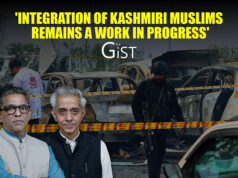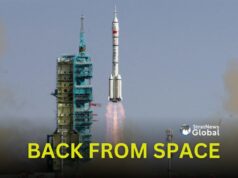The Pentagon has been funding American universities to conduct research that, in hundreds of cases, has strengthened the Chinese military.
A recent report by the House Select Committee on the Chinese Communist Party and the Committee on Education and the Workforce titled Fox in the Henhouse: The U.S. Department of Defense Research and Engineering’s Failures to Protect Taxpayer-Funded Defense Research, lays it out.
Between mid-2023 and mid-2025, the committees found roughly 1,400 academic papers funded by the Department of Defence that also listed Chinese collaborators. More than half involved institutions directly tied to the People’s Liberation Army.
The United States spends more than 800 billion dollars a year on defence. Yet some of that money is indirectly helping Beijing narrow the technological gap in fields that will shape the next generation of warfare.
The examples are striking. American researchers, with Pentagon support, co-authored studies with Beihang University, Harbin Institute of Technology, and the National University of Defense Technology. All three are at the core of China’s defence research and appear on U.S. blacklists. The subjects were not trivial. They included hypersonics, quantum sensing, artificial intelligence, swarm robotics, semiconductors, and advanced alloys.
Some cases listed in the report look almost like parody. An Army-funded project used Chinese supercomputers that also support nuclear weapons design. A Navy grant backed research with BGI, the genomics company accused of helping build China’s DNA surveillance program against Uyghurs. Another Pentagon-funded paper listed Alibaba’s research academy, a pillar of Beijing’s military-civil fusion strategy.
Brown University worked on quantum research with a scientist supported by Shanghai’s Pujiang Talent Program, which exists to funnel foreign knowledge back to China. Washington University in St. Louis co-authored neuroscience studies with Peng Cheng Laboratory, a state-run hub that trains cyber operators. MIT and Cornell published with Xidian University, a designated defence university specialising in radar and semiconductors. The University of Texas and Arizona State partnered with Beihang and Shanghai Jiao Tong University on algorithms that power drone swarms. Even the Navy’s own research arm collaborated with CALT, China’s missile and launch vehicle giant.
This is not innocent academic exchange. It is a pipeline of know-how flowing into Beijing’s arsenal. Every paper shows China where the Pentagon is investing, what breakthroughs are coming, and how they might be adapted for military use. Spies are not necessary when cooperation provides the same results, wrapped in the credibility of joint scholarship.
The ethical problem is just as stark. Some of the Chinese partners are directly involved in repression. BGI’s genomics work is central to monitoring Uyghurs. Alibaba’s platforms help build China’s surveillance state. Pentagon dollars are not only boosting a rival military. They are underwriting authoritarian control.
Supporters of this openness say the work is “fundamental research” and therefore harmless. That excuse belongs to another era. Modern science is dual-use by default. An alloy for cars can also make lighter missile casings. An algorithm for consumer logistics can also direct drone swarms. There is no neutral space. Pretending otherwise is negligence.
Some collaborations may also have violated U.S. law. The Wolf Amendment has barred NASA from bilateral cooperation with China since 2011. Yet a Pentagon-funded project still partnered with Beihang and Shanghai Jiao Tong University.
Warnings have been clear for years. The FBI has testified about universities being used as “non-traditional collectors” of sensitive technology. The 1999 Cox Report documented China’s strategy of exploiting academic channels. Australia even built a public tracker of Chinese defence-linked universities. But the Pentagon chose not to act.
Part of the problem is structural. The Pentagon lacks a centralised system to vet grants, and post-award monitoring is minimal. In some cases, officials did not even have access to the records of what they had funded.
But the larger problem is cultural. Universities resist restrictions because they want foreign students and international prestige. Professors defend partnerships in the name of academic freedom. Pentagon officials, reluctant to upset academia, hide behind the language of openness. That posture is not noble. It is self-defeating.
The strategic consequences are already visible. Beijing has credited partnerships with American researchers for helping close gaps in materials science and manufacturing. China’s hypersonic breakthroughs did not emerge in isolation. They were built on years of joint work with U.S. labs, some funded by the Pentagon itself.
Congress is pushing the SAFE Research Act to cut off funding for researchers tied to adversary institutions and to tighten disclosure rules. On paper it looks tough. But laws mean little if they are ignored. Unless grants are revoked, administrators held accountable, and officials dismissed, the pattern will continue.
The United States is in a technology race with a rival that mobilises all parts of its system for strategic power. China does not separate academic research from military gain. Washington continues to act as if it does. That assumption has already cost America its edge.
If this pipeline stays open, the United States will keep outspending China on defence while falling behind in critical technologies. The weapons that threaten American forces will be partly designed with American money. In other words, the Pentagon will be paying for its own defeat.
In a career spanning three decades and counting, Ramananda (Ram to his friends) has been the foreign editor of The Telegraph, Outlook Magazine and the New Indian Express. He helped set up rediff.com’s editorial operations in San Jose and New York, helmed sify.com, and was the founder editor of India.com.
His work has featured in national and international publications like the Al Jazeera Centre for Studies, Global Times and Ashahi Shimbun. But his one constant over all these years, he says, has been the attempt to understand rising India’s place in the world.
He can rustle up a mean salad, his oil-less pepper chicken is to die for, and all it takes is some beer and rhythm and blues to rock his soul.
Talk to him about foreign and strategic affairs, media, South Asia, China, and of course India.





